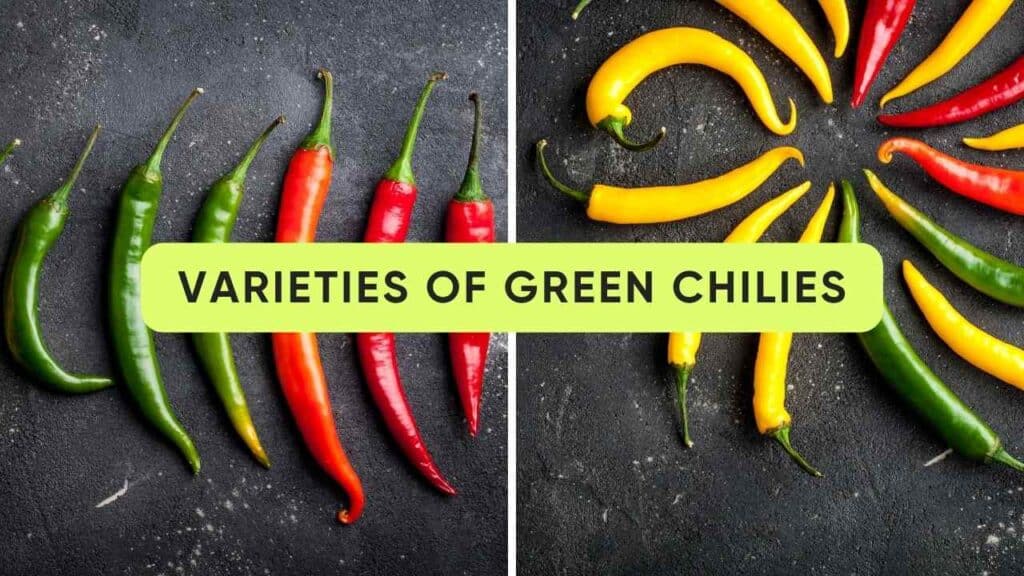Green chilies—they’re like little bursts of flavor that can transform any dish from bland to grand. But what exactly are these vibrant peppers, and why do they hold such a special place in kitchens around the world? Let’s dive in and uncover the secrets of these spicy wonders!
Origins and Cultivation
Green chilies have been adding zing to dishes for centuries, tracing their roots back to regions like Mexico, South America, and Asia. These peppers thrive in warm climates and are cultivated in a variety of settings, from backyard gardens to vast agricultural fields. Their cultivation involves careful attention to factors like sunlight, soil quality, and water supply.
Varieties of Green Chilies

When it comes to green chilies, variety is the spice of life! From the mild Anaheim to the fiery Thai bird’s eye, there’s a green chili to suit every palate. These peppers come in a dazzling array of shapes, sizes, and colors, each boasting its own unique flavor profile and heat level. Whether you prefer the subtle sweetness of the poblano or the intense heat of the serrano, there’s a green chili out there waiting to tantalize your taste buds. So go ahead, explore the world of green chilies, and discover your new favorite flavor!
Nutritional Profile
Beyond their tantalizing taste, green chilies pack a powerful nutritional punch. These vibrant peppers are rich in essential vitamins such as vitamin C, vitamin A, and vitamin K, along with minerals like potassium and iron. Additionally, they contain antioxidants like beta-carotene and capsaicin, known for their anti-inflammatory and metabolism-boosting properties. Incorporating green chilies into your diet can help support immune function, improve digestion, and even aid in weight management. So add a little spice to your meals and reap the rewards of these nutrient-packed peppers!
Culinary Uses
Whether you’re whipping up a sizzling stir-fry or adding a kick to your morning eggs, green chilies are a versatile ingredient that can take your cooking to the next level. From raw to roasted, there are countless ways to incorporate these peppers into your favorite recipes. Dice them up for a spicy salsa, stuff them with cheese for a flavorful appetizer, or blend them into a tangy sauce to drizzle over tacos. With their bold flavor and vibrant color, green chilies are sure to add a pop of excitement to any dish. So get creative and let your culinary imagination run wild!
Flavor and Heat
How much heat can you handle? Green chilies come in a range of heat levels, from mild to mouth-searing, thanks to the presence of capsaicin, the compound responsible for their fiery flavor. The intensity of heat varies not only between different varieties of green chilies but also within the same pepper, depending on factors like growing conditions and ripeness. But fear not, adventurous eaters—there are plenty of ways to temper the heat and savor the flavor of these spicy gems. So whether you’re a heat seeker or a mild enthusiast, there’s a green chili out there with your name on it!
Preserving and Storing
Got a surplus of green chilies on your hands? Don’t let them go to waste! With proper preservation techniques like freezing, drying, or pickling, you can enjoy the flavor of them year-round. Freezing green chilies is a simple and effective method to retain their freshness, while drying them allows for long-term storage and easy incorporation into recipes. Pickling green chilies not only extends their shelf life but also adds a tangy twist to dishes. Just be sure to store them properly in airtight containers or jars to maintain their flavor and crispness. So go ahead, stock up, and keep the flavor train rolling!
Culinary Tips and Tricks
Ready to get cooking? Here are a few tips to help you make the most of your green chilies:
- Handle with care: Wear gloves when chopping hot peppers to avoid any unpleasant surprises.
- Taste as you go: Add these gradually to your dishes, tasting along the way to adjust the heat level to your liking.
- Experiment fearlessly: Don’t be afraid to get creative with your green chili recipes—there’s no wrong way to enjoy these spicy delights!
Cultural Significance
In many cultures, green chilies hold a special place in culinary traditions and celebrations. From spicy salsas in Mexico to fiery curries in India, these peppers are beloved for their ability to add depth and dimension to traditional dishes. So whether you’re exploring the streets of Bangkok or cooking up a storm in your own kitchen, these are sure to bring a taste of adventure to your plate.
Sustainability and Environmental Impact
As the popularity continues to grow, so too does the importance of sustainable farming practices. By supporting local and organic sources, we can help ensure the future of these beloved peppers for generations to come. Sustainable farming methods, such as crop rotation and natural pest control, minimize environmental impact and preserve biodiversity. Additionally, reducing food waste by properly storing and utilizing green chilies can further mitigate environmental harm. So while enjoying the fiery flavor of green chilies, let’s also do our part to protect the planet and promote sustainable agriculture.
Global Market and Trade
From bustling markets to gourmet grocery stores, green chilies are a hot commodity on the global market. Major producing countries like India, Mexico, and Thailand play a key role in meeting the demand for these spicy peppers, which are exported to destinations around the world. So whether you’re a spice lover in New York City or a chili farmer in the hills of Guatemala, chances are you’ve encountered the fiery allure of green chilies.
Conclusion
Green chilies may be small in size, but they pack a mighty punch when it comes to flavor and heat. From their humble origins to their widespread popularity, these peppers have earned their place as a beloved ingredient in kitchens around the world. So the next time you’re craving a little spice in your life, reach for the these and let your taste buds take a trip to flavor town!
FAQs
What is a substitute for green chilies?
If you’re in a pinch and can’t find green chili, fear not! There are several substitutes you can use to add a similar kick to your dishes. Jalapeños are a popular alternative, offering a comparable level of heat and flavor. Alternatively, you can use serrano peppers for a spicier option or poblano peppers for a milder kick. Bell peppers can also work in a pinch, although they lack the heat of green chilies.
What is the difference between green chilies and peppers?
While both of them belong to the same family of plants, there are some key differences between the two. Green chilies are typically smaller and spicier than peppers, with a thinner skin and a more intense flavor. Peppers, on the other hand, come in a variety of colors and shapes, ranging from sweet bell peppers to hot habaneros. While both are versatile ingredients in cooking, green chilies are prized for their fiery heat, while peppers offer a sweeter, milder flavor.
What is the common name of green chili?
The common name for green chili is simply “green chili.” However, depending on the region or variety, they may also be known by specific names such as jalapeño, serrano, Anaheim, or Thai bird’s eye chili. Regardless of the name, they are universally recognized for their vibrant color and spicy flavor, making them a beloved ingredient in cuisines around the world.
What do green chilies taste like?
Green chilies have a distinct flavor that’s both spicy and slightly bitter, with hints of sweetness and earthiness. The level of heat can vary depending on the variety, but generally, they pack a punch that ranges from mild to fiery. Their flavor profile adds depth and complexity to dishes, enhancing savory flavors and cutting through rich, fatty ingredients. Whether raw, roasted, or cooked into sauces, green chilies bring a bold and vibrant taste that’s sure to liven up any meal!


